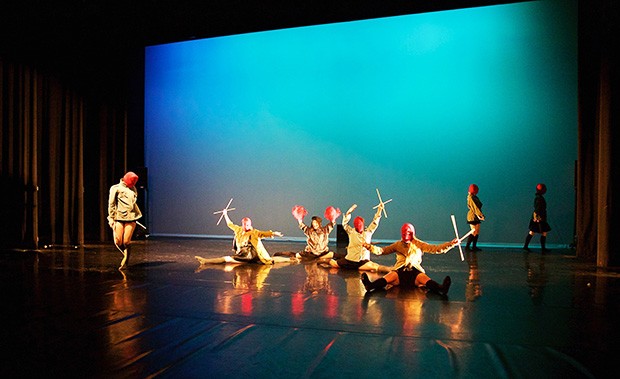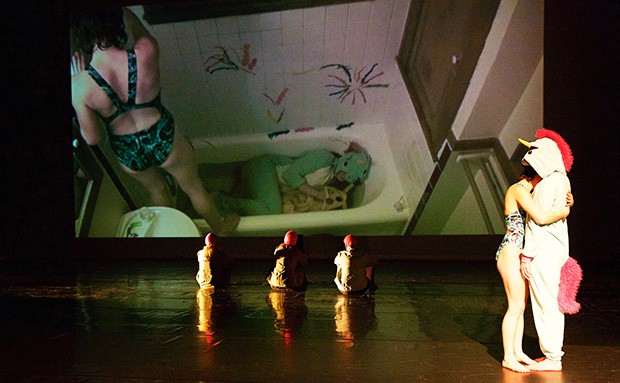‘I see dance everywhere’

Silvy Panet-Raymond knew from an early age that she was destined to move.
“I just knew there was something there,” she says.
The chair of Concordia’s Department of Contemporary Dance grew up in the rural landscapes surrounding Mont-St-Hilaire, tobogganing in the winter, swinging on farm fences and climbing trees in the summer, and dancing in the living room all year round.
“I got my real first sense of movement. I think it became a foundation for what I ended up doing.”
Panet-Raymond joined Concordia in the early 1980s, when Elizabeth Langley — founder of the contemporary dance program and a former teacher of Panet-Raymond’s — offered her a job. Today, she alternates chairing duties with Michael Montanaro.
The contemporary dance program seeks to evolve new approaches to the moving body, often through experimentation and collaboration. But how, exactly, does one teach choreography?
The power of observation
Panet-Raymond says Concordia’s annual, full-year undergraduate course on the creative process is essential.
“It's where students develop and apply movement research, integrate critical thinking into their explorations of scores, structures, improvisations, site-specific projects, analysis of artistic works and so on.”
Students also experiment with new media — dancing for the camera, collaborative projects — and develop new ways of creating experiential, sensorial and kinetic experiences.
One way Panet-Raymond approaches the creative process with her students is by asking them to go outside for 45 minutes with a notepad and pen. To sharpen their ability to perceive and describe movement, she gets them to write down their observations about people’s gait, position and posture.
When the students return to class, she writes down their observations on the board. This exercise generates ideas and refines the students’ perceptions of the way people connect to activities, space and others.
The full-year choreography course also encourages students to challenge their tendencies and approach dance without preconceived notions or attachments to genres.

She points to one student who wanted to choreograph a Bollywood dance. Panet-Raymond asked the student to instruct the dancers to do particular movements without specifying the style. The results opened their eyes to the process of finding their own vision within existing genres.
Other elements of dance — timing, phrasing (sequences of movements), dynamics, musical interactions, developing a map of space-time connections — are taught throughout the three-year program at Concordia. Students are also given ample unsupervised studio time to experiment.
Third-year student Camille Lacelle-Wilsey says she’s picked up an unbelievable amount of technical skill from Panet-Raymond and Montanaro. “Panet-Raymond is the kind of teacher you have once in your life,” she says.
'It’s special to work as a choreographer'
Lacelle-Wilsey, who’s only 23 years old, has used these acquired skills to produce a performance at Montreal dance “laboratory” Tangente — co-founded by Panet-Raymond, incidentally — which was presented earlier this month.
After completing her Cégep studies, Lacelle-Wilsey took time off to choreograph for a movie, as well as take dance courses abroad in Belgium and France. She then enrolled in Concordia’s dance program to expand her technical knowledge and choreography toolkit.
Panet-Raymond says it’s quite remarkable for a current student to pitch to and be accepted by Tangente.
The piece, D’amour, ils se gaveront, de haine ils déborderont, featured fellow Concordia dance students and previous collaborators Nien Tzu Weng and Guillaume Loslier-Pinard.
Lacelle-Wilsey loves observing the way dancers move and how they interpret her instructions, as well as working with those in supporting roles — costumiers, set designers, musicians — to help make a performance happen.
“It’s special to work as a choreographer,” she says. “I’m always looking at the world with those eyes. I see dance everywhere.”
Find out about other upcoming performances in Concordia's Department of Contemporary Dance.